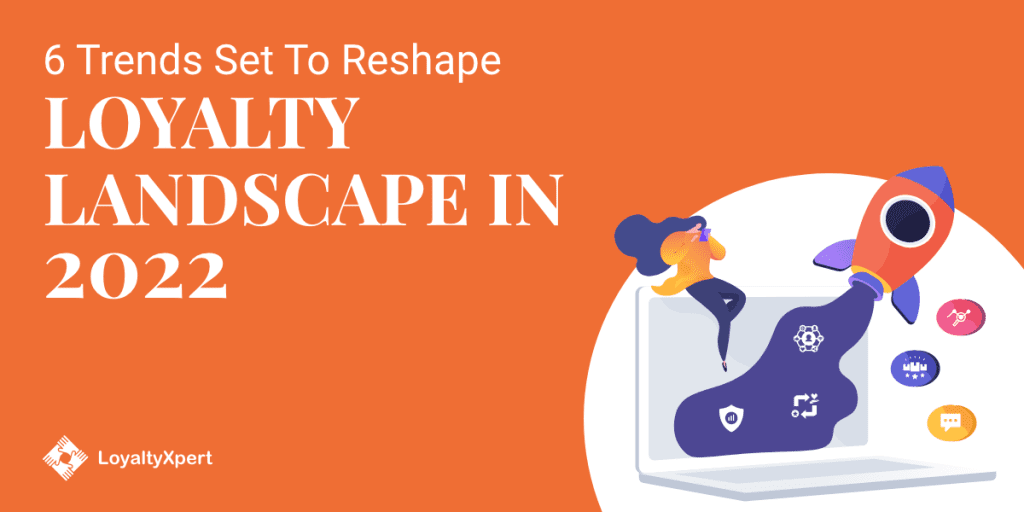Two decades back, affinity programs were popular in aviation and hospitality. Today, almost every sector appreciates the significance of loyalty programs. Yet, many programs fail to take off because they are irrelevant for shoppers.
You are here as you want your loyalty programs to keep up with trends. No doubt. Customer behavior and shopping habits have changed over the last two years.
In this blog, let’s shed light on why loyalty management solution has become a marketing trend and is going to remain constant in 2022.
Incentivizing social media interactions
Yes, some businesses incentivize social media interactions. Companies offer incentives to consumers who follow the brand’s social media accounts. Even small enterprises share goodies with customers who write reviews on various platforms.
Some customers don’t mind sharing profile information access either. Shoppers earn rewards, while companies get the opportunity to offer relevant content. It’s the best way to analyze likes and dislikes.
A mix of mobile apps and text messages (SMS)
Affinity program participants prefer accessing information and redeeming rewards via mobile devices. Customers get the ease of use. Brands can send reminders, messages, and offers via app notifications. Real-time personalization of offers ensures consumers only get the most relevant incentives.
It’s likely that some businesses do not have an app. For such firms, text messages prove to be the perfect way to reach customers and keep them engaged.
SMS can also reach customers who prefer keeping app notifications turned off. Plus, some companies operate in geographies where people use a feature phone. A text message helps businesses to stay in touch with shoppers.
Customers want frictionless and convenient experiences. Allow them to access information on accumulated points via multiple channels.
Paid loyalty programs for retaining customers during a crisis
As pointed out in the McKinsey study, consumer behavior has changed since 2020. People’s loyalty towards their favorite brands shrunk due to many reasons. Yet, paid loyalty programs proved to be the ultimate tool for brands.
Many businesses reshaped their affinity programs to attract and retain customers. A global customer loyalty report published by Antavo highlighted exciting stats. Roughly 62.1 percent of participating companies said loyalty programs helped keep customers engaged during the pandemic. Since then, loyalty marketing has had a significant place in strategic decisions.
CVC’s CarePass is the best example if you wish to analyze case studies. The retail pharmacy chain charges a $5 monthly fee for program membership.
Members can buy all CVS health brand offerings at 20 percent discounted rates. In addition, customers get exclusive access to the pharmacy helpline along with free shipping for all products. Put simply, customers get convenience, discounts, and access to premier service. On the other hand, CVC retains high-value consumers in its ecosystem.
The generic discount strategy does not work. Instead, these days shoppers join loyalty programs that have meaningful rewards. And changing membership fees can help create a dedicated budget for premium rewards.
Affinity programs capture a tremendous amount of accurate data
Information plays a crucial role in communication, retention, and marketing. Even budgeting and corporate decision-making depend on data. But, customers don’t appreciate companies that access their data without consent. As a result, tech giants like Apple have found ways to turn third-party cookies obsolete. Plus, new online privacy laws are forcing companies to redraw data strategies.
Now how will brands access customer insights crucial for analyzing buying behavior? Loyalty programs can ensure legitimate access to the same.
Many companies have understood the significance. As a result, they design new loyalty programs with data collection in mind.
Data trust
Offers based on buying history and browsing behavior ensure the best ROI. But do customers show consent for tracking? Yes. Shoppers proactively opt-in and share their data while joining such programs. A recent study points out the figure is 54 percent.
Brands even offer bonus points to shoppers for complete profile details submission. People do not mind sharing their data for personalized rewards. But, it must remain secure.
Shoppers might tolerate an instance of subpar customer service. However, even a single data breach can force consumers to move somewhere else.
What’s the solution to gain confidence? Start with basics. Tell your customers how you protect their information from third-party misuse. If you have an app-based loyalty program, discuss the security features with members. Your loyalty app or web platform should state your responsibilities as a data collector and the international laws you adhere to.
Switch from a rational, transactional model to emotional
During 2020-21, access issues, product availability, and reduced spending eroded transactional brand loyalty. Yet, it’s noteworthy that brands that have a solid emotional connection did not lose customers.
Is your current affinity program more on the rational side than emotional? Does the list of incentives consist of experimental rewards? Let’s quickly revise the difference between both incentives.
Special offers, discounts, and free products are rational benefits. These are pretty straightforward programs that worked well until the last decade. On the other side, emotional loyalty involves offering ancillary benefits combined with recognition, convenience, entertainment, and a sense of belonging. For example, some brands allowed customers to accumulate rewards points and donate them to help front-line workers during the pandemic. Such incentives help companies form an emotional connection with the brand.
Speed, personalization, and data privacy are significant parts of the customer experience. Unfortunately, most affinity programs follow the legacy transactional model. If you plan a loyalty strategy, ensure emotional engagement remains in the spotlight. Emotional loyalty requires time, effort, patience, and resources. But once formed, customers won’t think of going elsewhere.
[blog-cta]
To conclude:
Consumers do show interest in emotions, experiences, and ethics. You can build loyalty and retain customers with these three elements. Offer convenience combined with surprises to drive emotional connection.
Do you need a loyalty platform to enhance customer experience and improve data and analytics? Connect with LoyaltyXpert today. Let us design the best strategies to enhance loyalty and customer engagement.

